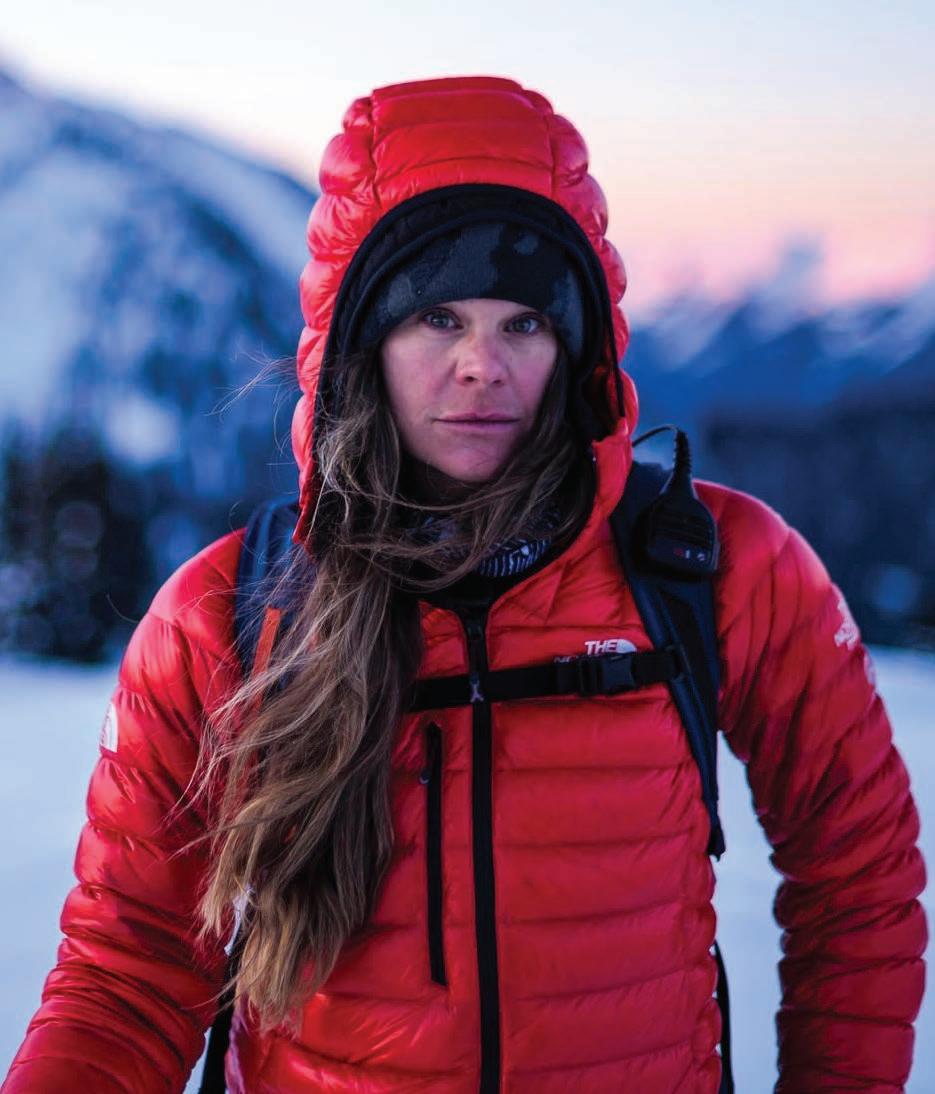
9 minute read
Christina Lustenberger interview. p
NO PLACE LIKE HOME:
AN INTERVIEW WITH CHRISTINA LUSTENBERGER
ACMG GUIDE AND BIG MOUNTAIN FILM STAR CHRISTINA ‘LUSTI’ LUSTENBERGER IS KNOWN FOR EXPOSED SKIING, FIRST DESCENTS AND ALL-AROUND BADASSERY. ROOTED IN REVELSTOKE, CHRISTINA HAS TICKED SOME IMPRESSIVE FIRST DESCENTS IN WESTERN CANADA’S MOUNTAINS. IN THIS INTERVIEW, CHRISTINA SHARES THE IMPACT ‘PLACE’ HAS ON HER SKI JOURNEY, WHY SHE LOVES HER HOME MOUNTAINS AND MORE.
By Nora Hughes
Christina Lustenberger is rooted in Revelstoke. As an ACMG guide and big mountain film star, she has the opportunity to travel around the world skiing but keeps coming back to her home mountains pursuing unskied lines. Photo: Bruno Long Every weekend when I was a kid, my family would drive from Massachusetts to Vermont to ski. With my nose pressed to the window, I would visually document the drive, searing the sights into my mind. As we crest the summit of Rochester Gap on Bethel Mountain Road, the clearing in the trees reveals an expansive ridge line with amazing vertical down to the valley. Every time I see that line, I imagine what it would be like to click into my skis and drop in. Don’t we all? Those repetitive drives where there’s nothing to do but stare out the window and dream about the sick turns you would slash down that shoot. That mountain outside of the bedroom window greets you every morning and haunts you every evening as you lie awake wondering if anyone has ever ventured up its exposed ridge and launched down its near vertical face. The kind of objectives that taunt and tease until you finally find the time, courage or opportunity to achieve it, if it is, in fact, achievable. For professional skier and ACMG guide Christina Lustenberger, that objective was Mount Nelson. She grew up in its shadow. The mountain was the backdrop for her classroom and the ski hill where she grew up racing. “I remember I would drive into that valley all the time. And see that peak and get so excited because that peak to me is like going home,” Christina says. “Driving there to go ski that line, I remember being like, oh, fuck, now we actually have to do it. Like we're here to ski that thing. And it just was this rush of emotions, butterflies and nerves.” Christina grew up in Invermere and, during the pandemic, had the opportunity to ski a line she’s stared at her whole life. She’d spent eight years pitching the project to companies, and only when skiing close to home became cool did the opportunity arise. Christina skied the line with childhood friend and fellow professional skier Ian Macintosh. Together, the two lived their childhood dream. “We've had so many insane days in the mountains. But we both agree that was one of the best days of our lives,” says Christina. “I think what makes it so unique from other lines is that imagination to look at it and go, ‘I wonder if you could ski that,’ and then wait 15 more years to come back and do it. It was the purest imagination because it came from a child. I was a child when I first had that thought. And I think that a child’s imagination is limitless.”
Photo credit: Drew Smith
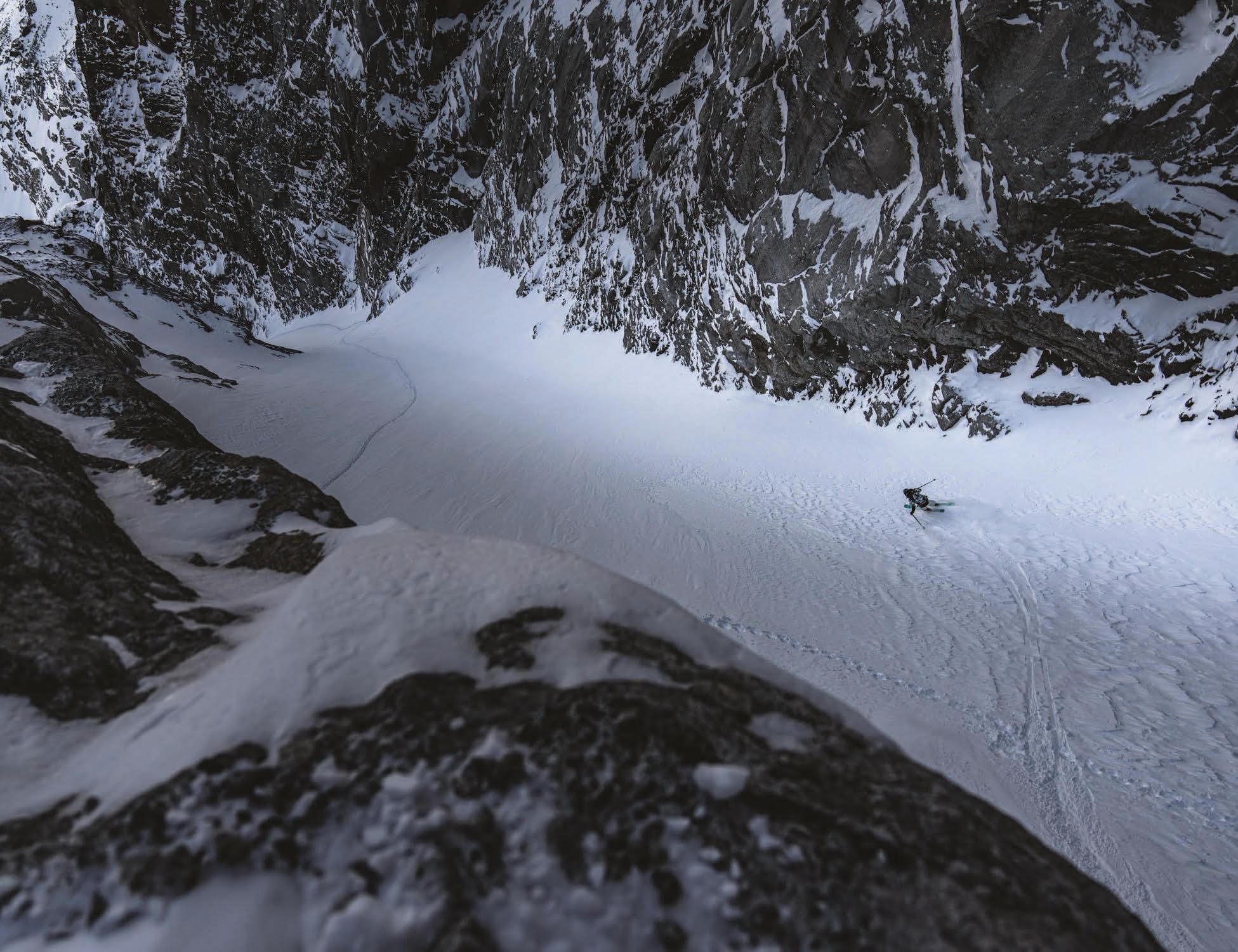
N: You turn your first descent dreams into realities. How does a first descent come together?
C: It just starts with a wonder. You look at something, and I wonder if that could be skied, or I wonder if it has been skied and then just kind of rolls into an obsession and inspiration and purpose. For me, it's all about this continuum of progression in the mountains and adding different layers; so I don't get bored or fall into the status quo. And it's pushing or evolving yourself as a person that way. So, yeah, I think that's kind of what drives it. And then, from that moment of seeing something that just drives your curiosity, that then becomes this thought process of “what would the conditions take? What's the route?”
N: You ski a lot of big lines right here in our “backyard.” How has the meaning of a place informed your journey as a skier?
C: I have had the opportunity to travel all around the world, and I appreciate those experiences. But I keep coming back to the home mountains, whether that's the Selkirks, the Monashees, or just Western Canada in general. I appreciate the wilderness that we have and the opportunity to explore unskied lines, remote valleys and to have that quietness and stillness in someplace where you can just really focus on the journey that you're on.
N: Tell me about your first descents on Mount Ethelbert this past winter.
C: I think we did three Ethelbert missions in four weeks. Ethelbert is a peak you can see from the backyard of the property we purchased in the Spillimacheen area. I was building trails up on that hillside, and I could see it, which is really cool. Just to have that peak that you can just stare at and think about the good memories and the journey it’s provided. Growing up in that valley, my parents always took us hiking at such a young age. So many of the hikes took us into a valley that sits right below Ethelbert.
Then, as a teenager, early 20s, I think, I went there one summer and like scrambled it in the summer. At that point had wondered what it would be like to ski but also didn't like quite understand what aspect I would want to ski. But a few years ago, I think it kind of clicked back into my mind. It’s such a like prominent mountain that sits in that valley, so it was a natural progression. Okay, well, Nelson is done; what’s the next thing? Driving north, it's right there. And the east face is really obvious from the road. And so we went and skied that. And then also noticed that there was a south face right off the summit with a 100-metre hanging face, repel and 1,200-metre descent to this lower lake. So after skiing the east face, we took a week off, and we're just like, well, we kind of have to go back. That just looks too good of a line not to go back and try. So we went a week later, and that ended up being the TGR segment for this year.
N: With mountains like Ethelbert and Rogers Pass in your backyards, do you ever get bored or find it challenging to find new limits to push?
C: It's funny because you go to these areas, and you have a goal, and you want to ski it. You're so focused on that. But when you're there and in that moment, you're also looking around, intrigued by what's around that next corner. What's the next thing? And there were some interesting ski lines in that area. The Purcells are beautiful mountains and hold a lot of cool skiing. So I think I will go back and that south face of Ethelbert, and the east face too. I think they are really classic lines, and it would be fun to go back. Just for an adventure. And I told my husband I have to drag him up there too.
Did you know Osteopathy is covered under most extended health beneet plans?
Five reasons Osteopathy might be the right approach for you:






You tend to injure and re-injure yourself You take a pro-active approach to your self-care You have a history of injuries that are limiting your general well-being You are experiencing discomfort, and no one can tell you “why” Y You have heard of Osteopathy, and you are curious to try it out





As the seasons change, so too does the clinic at Revelstoke Osteopathy & Wellness. Stay in touch as some changes are coming.
William Jarrige Osteopathic Practitioner DOMP
222 First Street East 250-814-8983 revelstokeosteopathy.ca
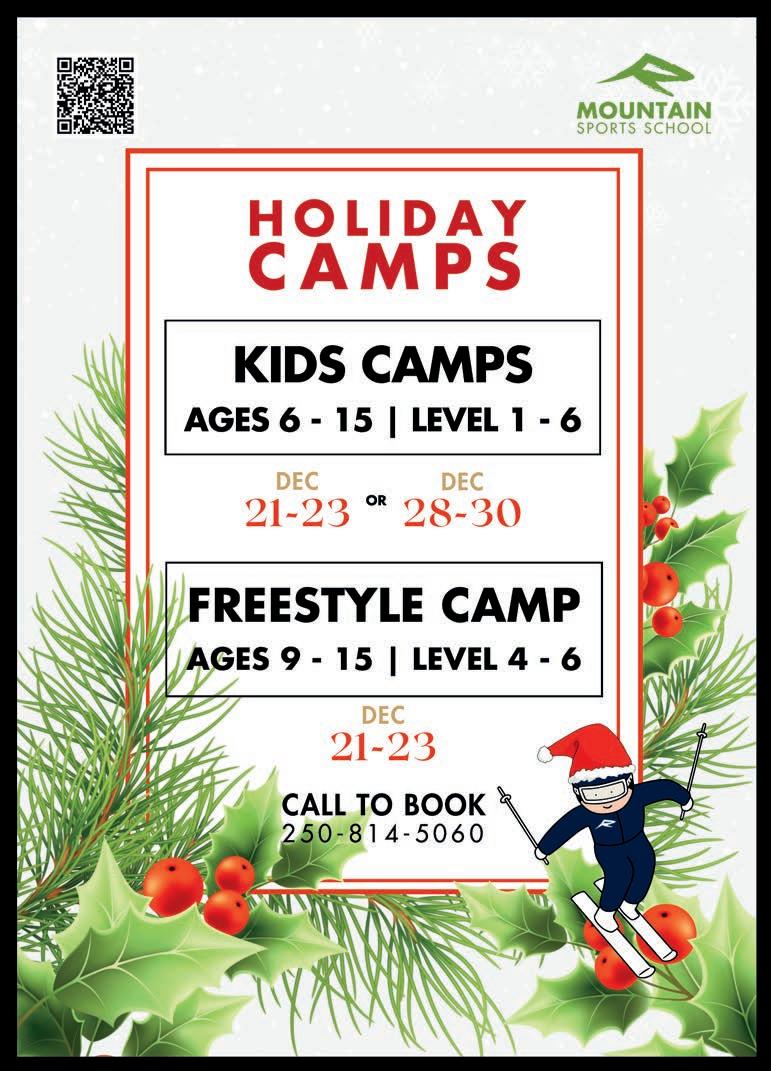
PHOTO GALLERY
OUR 2022 WINTER GALLERY FEATURES REVELSTOKE PHOTOGRAPHERS AND ATHLETES IN ACTION. WANT TO SUBMIT TO OUR PHOTO GALLERY? CONTACT US AT INFO@REVELSTOKEMOUNTAINEER. COM TO BE INCLUDED ON OUR CALL SHEET.
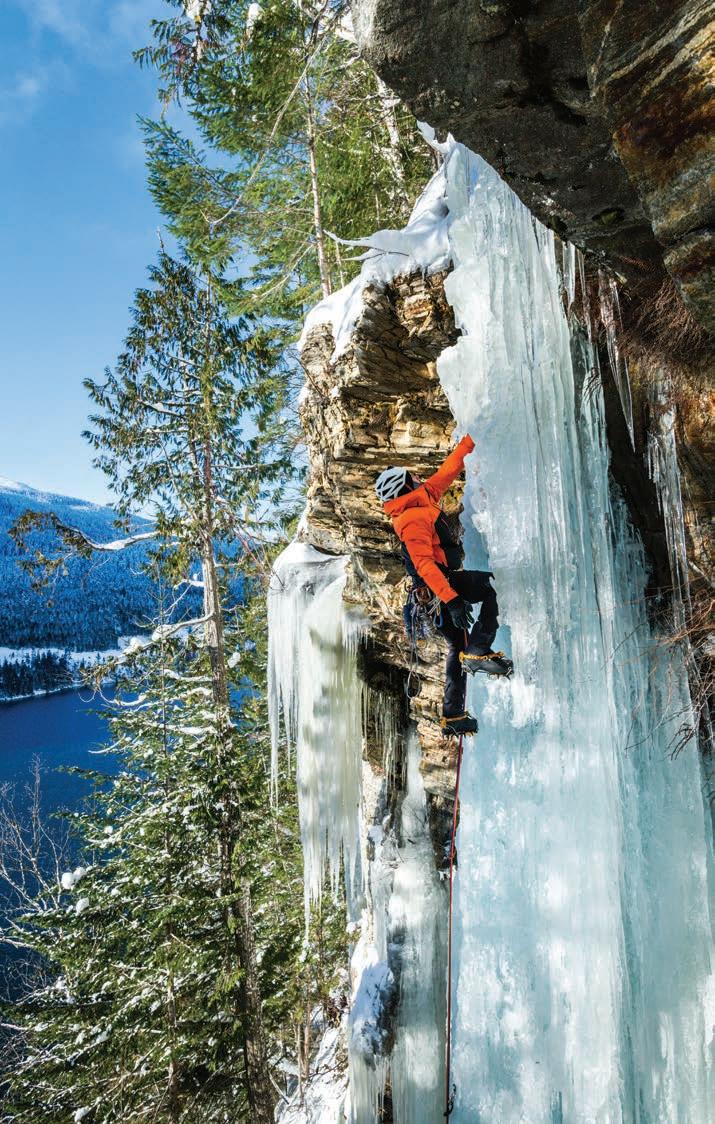
Photographer: Laura Szanto Athlete: Shep Howatt
Ice climbing is badass. It's one of the sports I genuinely admire. It's high consequence, dangerous and uncomfortable most of the time. Yet so many people are drawn to the sport — including Shep Howatt. I loved watching him make his way up this challenging waterfall. You could hear the hollowness in the ice every time his axe made contact. The pillar had water trickling down the middle, but he pushed forward with ease and steadiness. I'll be honest; I was gripped, holding my breath the whole time. If you’re keen on trying ice climbing, here are some helpful tips from the pros: dress with appropriate layers (seems obvious), keep your tools staggered and legs wide apart, and belay away from potential falling ice.
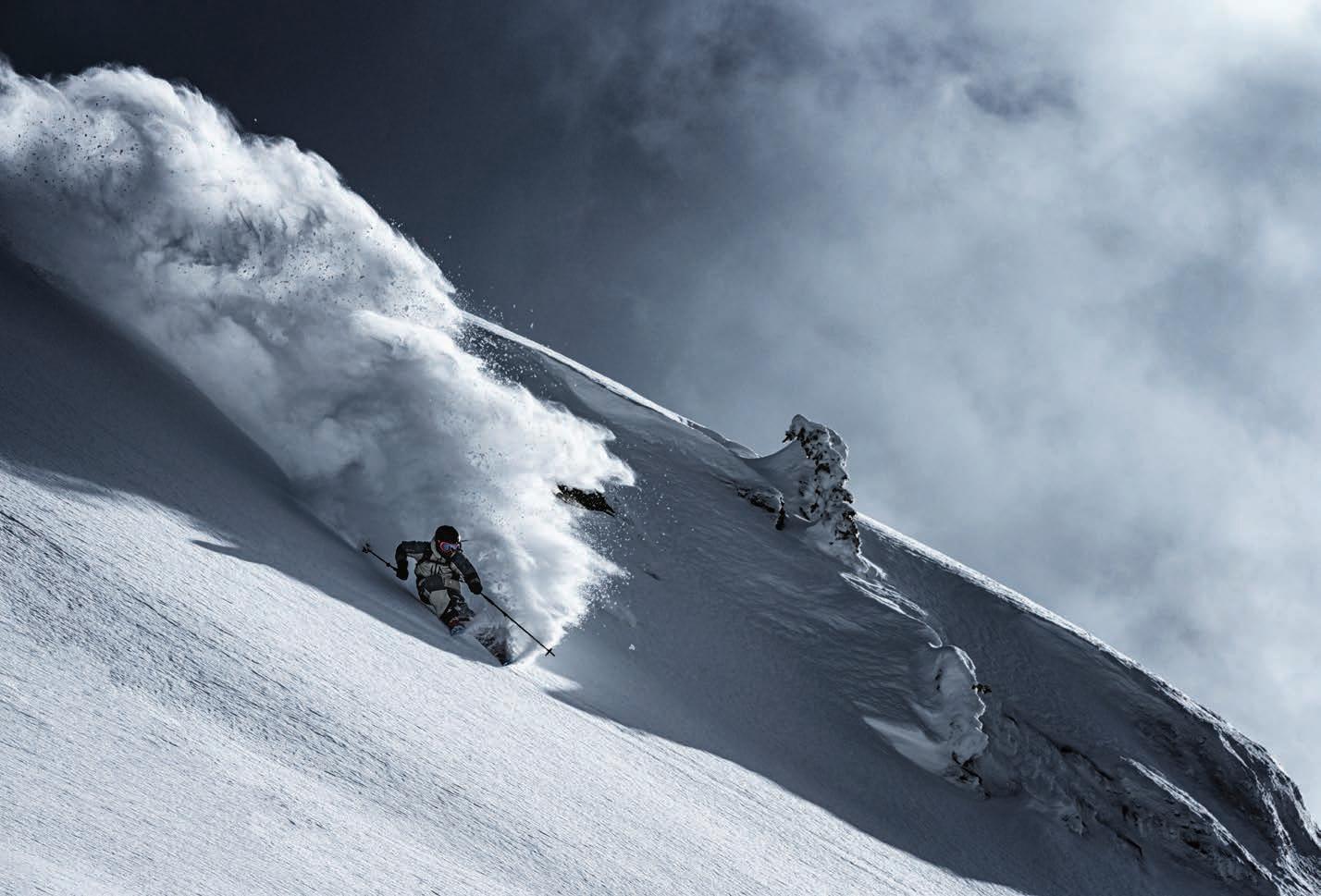

Photographer: Daniel Stewart Athlete: Yu Sasaki
Professional skier, Yu Sasaki, was incredibly close to achieving his most significant career goal in the early days of 2022. Matchstick Productions was knocking on his door; they liked his style, but Yu tore his Achilles just days before the shoot. It was a season-ending injury. Yu moved to Canada after high school. His life revolves around skiing. He grinds the summer months away, running a popular food truck in Revelstoke called Twilight Bite. In the winter, he skis. Yu says he feels a sense of urgency to achieve his goal. This year he turns 37 and plans on pushing his body to its limit for three more years. He’s unwilling to give up on his dreams and plans to prove that this winter.
Photographer: Shoto Ida Athletes: Various
It’s early April, and we had lost a day of our hut trip due to road closures, significant snowfall and hazardous conditions. I arrived to meet nine others, eight of whom I’d not met before. From the moment I arrived, I could feel this trip was going to be one for the books. Excitement was high. Smiles went around as people introduced themselves, and snow continued to fall from the gray sky. We started breaking trail through the 40 centimetres of fresh snow with our 60-pound backpacks filled with gear and group dinner supplies. The untracked slope extended as far as the eye could see, ready to be a canvas. We all pondered the question: “if an octopus was to ski, what would be the ski-to-pole ratio?” Talk of this kept us laughing while setting the skin track through some of the deepest snow we had seen that year.




